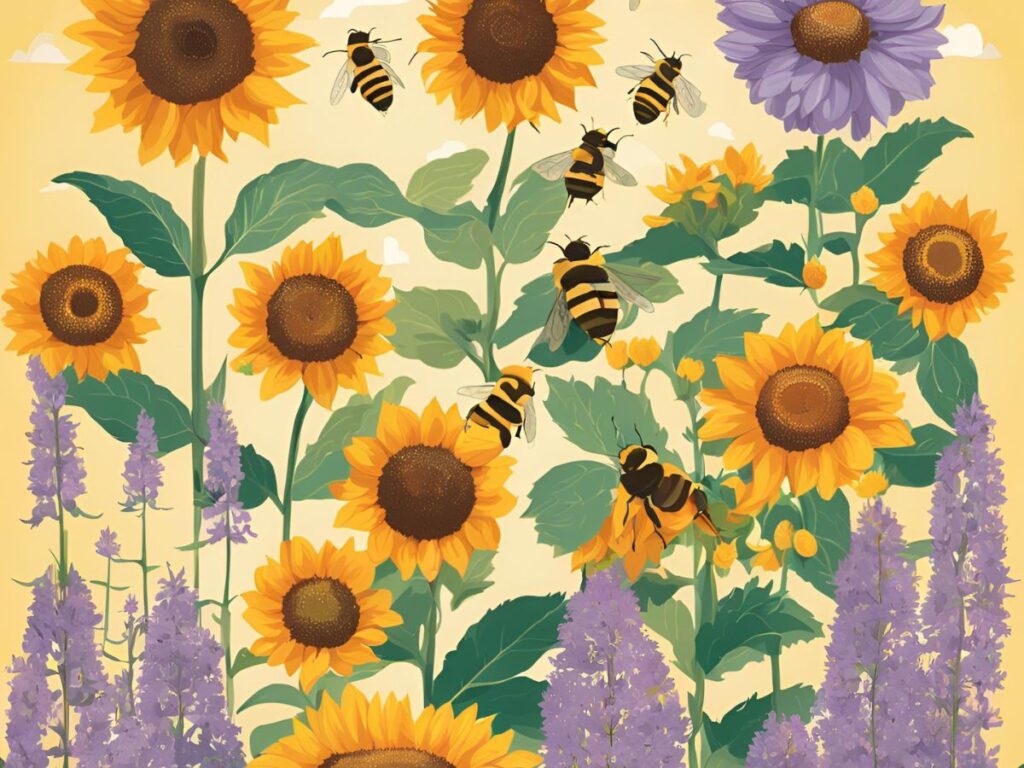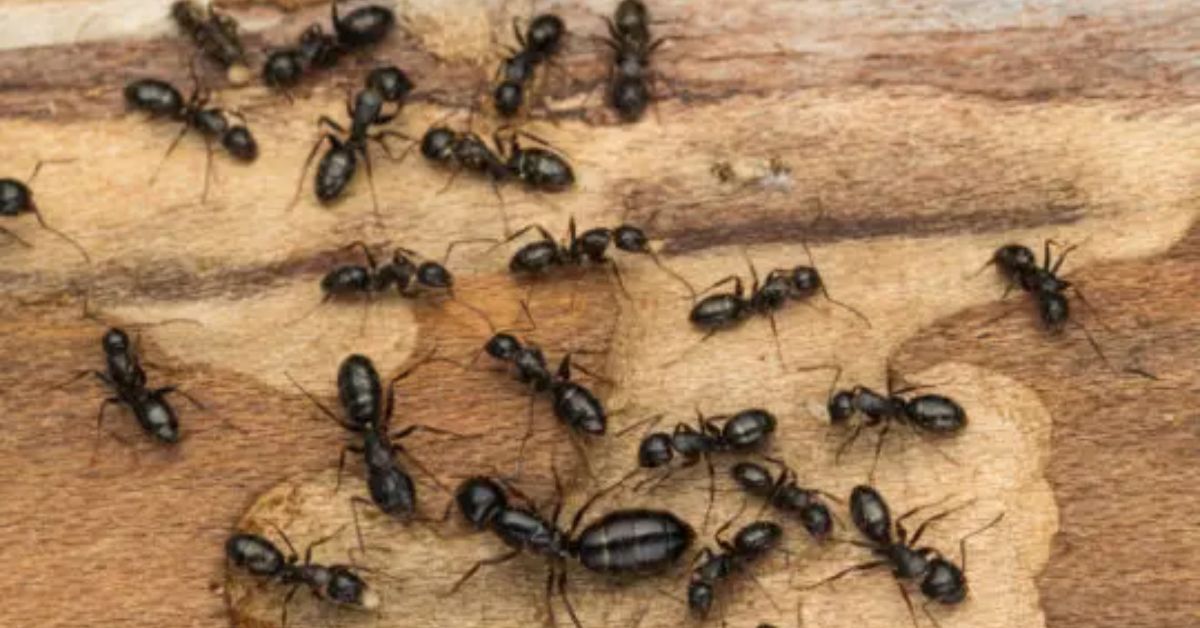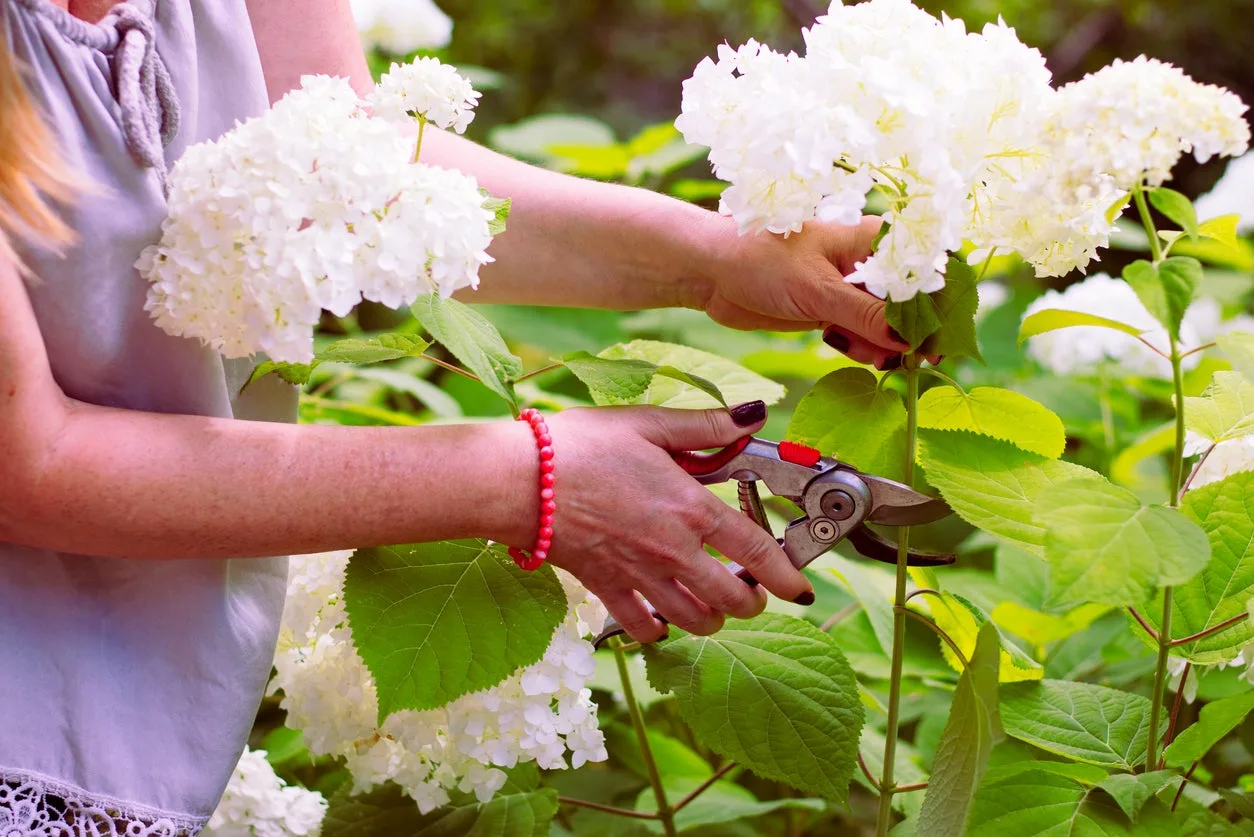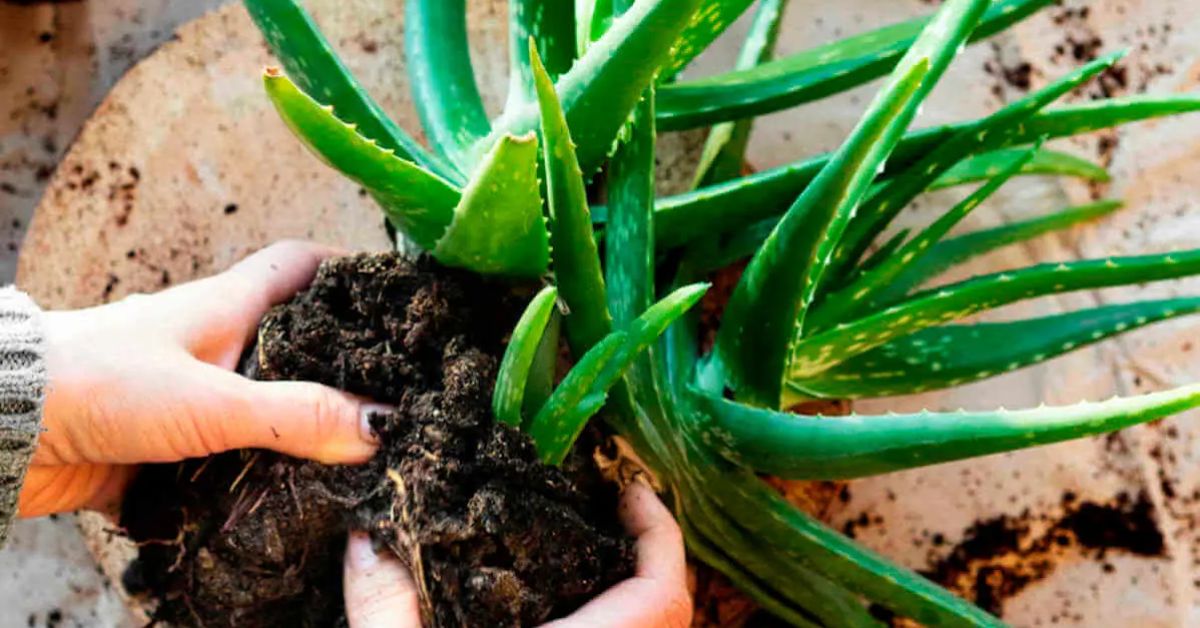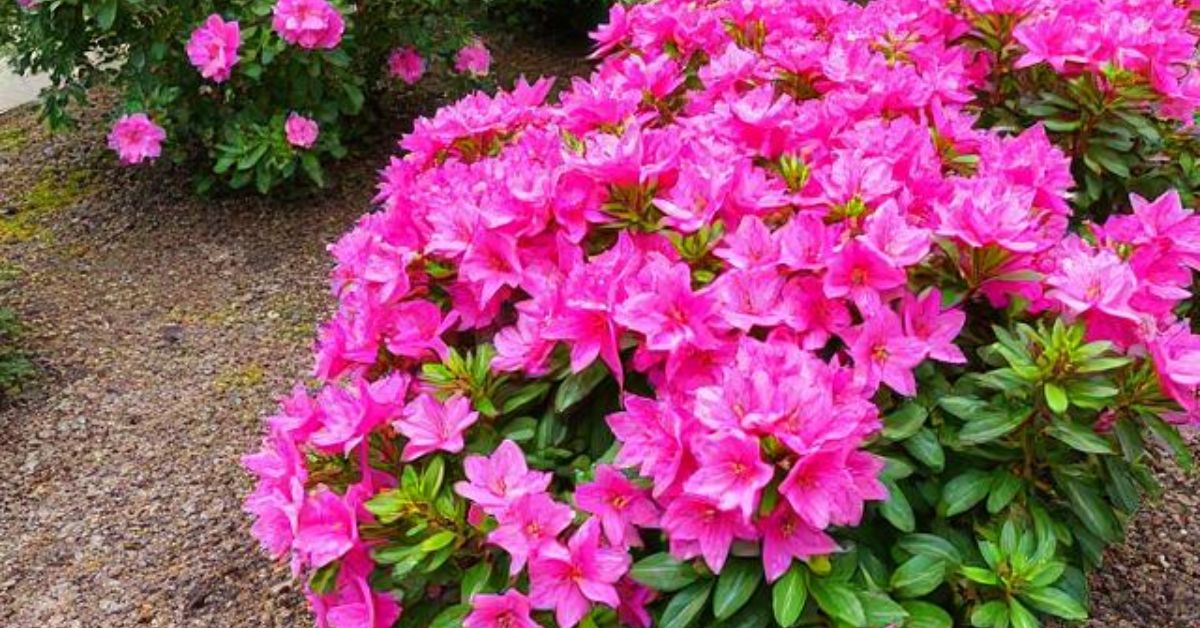As the main pollinators of several plants, including many of the crops we depend on for food, bees are essential to our environment. However, with the decline in bee populations due to habitat loss, pesticides, and climate change, supporting these vital insects is more critical than ever. One simple and effective way to do this is by cultivating plants that Give bees the pollen and nectar they require to survive. In this article, we’ll introduce you to the Foolproof Five: The Best Plants to Grow for Bees, offering a blend of beauty and functionality that will improve your garden and Give our buzzing friends a place to hide out.
Regardless of your level of gardening experience, these five plants are easy to grow and are sure to attract and sustain a healthy bee population. By incorporating the Foolproof Five into your garden, you’ll contribute to preserving bee species while enjoying a vibrant, flourishing garden space. Let’s dive into the best plants to grow for bees and discover how you can positively impact the environment right from your backyard.
Why Bees Are Essential
Bees are among the most important pollinators in the natural world, playing a critical role in the reproduction of many flowering plants. Through their pollination role, bees transfer pollen from one flower to another, enabling plants to produce seeds, fruits, and subsequent plant generations. This process is essential for cultivating various crops, including apples, almonds, and blueberries, contributing significantly to global food production. Without bees, many of the foods we enjoy would become scarce and expensive, drastically impacting human diets and agricultural economies.
Beyond their direct contribution to food production, honey bee favorite flowers bees help maintain ecosystem balance. By encouraging the development of several plant species, bees support the habitats of countless other creatures, from birds to mammals. This interconnected web of life relies on the pollination services provided by bees to sustain biodiversity. Healthy plant populations, in turn, prevent soil erosion, improve water quality, and regulate the climate, showcasing how bees are a linchpin in environmental health.
How Plants Support Bees
Plants are essential to bees’ survival and well-being, primarily because they provide nectar and pollen. Flowers generate nectar, a pleasant liquid, is a crucial energy source for bees, while pollen provides the proteins and nutrients necessary for developing bee larvae. By visiting flowers to collect these substances, bees feed themselves and transfer pollen from one flower to another, aiding in plant reproduction.
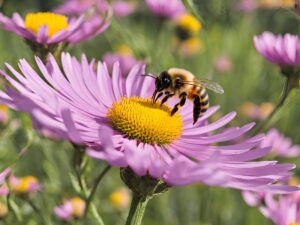
Beyond serving as a food source, plants offer shelter and habitat for bees. Certain plants provide the perfect spots for bees to rest and take cover from predators and harsh weather. Dense foliage and flowering shrubs can offer protection and a safe environment for bees to thrive. Some plant species, like hollow-stemmed plants and certain grasses, can even become nesting sites for various bee species, are bees attracted to marigolds especially solitary bees that don’t live in hives. These plants create a hospitable environment, ensuring that bees have a place to live and reproduce, thereby supporting their life cycle and contributing to the health of bee populations.
Foolproof Five: The Best Plants to Grow for Bees
Creating a bee-friendly garden begins with selecting the right plants to provide consistent food and habitat. The Foolproof Five are the best choices to ensure your garden supports and attracts a thriving bee population.
4.1. Lavender
Attributes: Lavender is known for its long blooming season, aromatic fragrance, and ease of cultivation. This hardy plant thrives in various conditions, adding a soothing scent to any garden. Bee Benefits: Lavender’s high nectar content makes it a favorite among bees, marigolds for bees attracting multiple species. Its extended blooming period ensures bees have a reliable food source throughout the growing season.
4.2. Sunflowers
Attributes: With their bright, tall, and attractive appearance, Sunflowers offer a beautiful touch to any garden. They are comparatively simple to cultivate and can reach impressive heights, making them visually appealing. Bee Benefits: Sunflowers are rich in pollen and offer a large landing platform for bees, bees favorite flowers, making gathering the pollen they need easier. Their vibrant blooms are particularly effective at drawing in pollinators.
4.3. Wildflowers
Attributes: Wildflowers offer variety and require minimal maintenance, giving gardens a natural, untamed beauty. They can thrive in many different environments, making them highly adaptable. Bee Benefits: Wildflowers provide a prolonged blooming period with a diverse range of nectar sources, what flowers do bees not like ensuring bees have continuous access to food. The variety also supports different bee species, enhancing biodiversity.
4.4. Borage
Attributes: Borage is a self-seeding plant known for its edible, star-shaped flowers and rapid growth. It’s a fantastic addition to any garden looking to support pollinators. Bee Benefits: Borage produces nectar continuously, making it a consistent source of sustenance for bees. It’s beautiful to them, often referred to as a “bee magnet” due to the high number of pollinators it draws.
4.5. Coneflowers (Echinacea)
Attributes: Coneflowers are hardy and drought-resistant, with vibrant, eye-catching colours. They are well-suited for gardens in various climates and are known for their resilience, flowers that bees don’t like. Bee Benefits: Their long-lasting blooms and high nectar yield provide ample food for bees. Coneflowers also bloom for extended periods, ensuring a steady food supply for pollinators.
Tips for Growing Bee-Friendly Plants
Creating a bee-friendly garden is an impactful way to support bee populations and encourage pollination. You can make your garden a haven for these vital pollinators by incorporating a few key strategies.
Avoid Pesticides
Avoiding pesticides is one of the most crucial steps in growing bee-friendly plants. Pesticides and other chemical treatments can be highly toxic to bees, harming their health and disrupting their ability to forage, navigate, and reproduce do pollinators like marigolds. Choose natural pest control techniques instead, like introducing beneficial insects or using organic solutions like neem oil. Maintaining a chemical-free garden creates a safer environment for bees and other pollinators, allowing them to thrive without exposure to harmful substances.
Plant in Clusters
Bees are more likely to visit gardens where plants are grouped in clusters rather than scattered throughout. Grouping similar plants creates a visually appealing and easily accessible food source for bees, allowing them to forage more efficiently. This strategy reduces the energy bees expend traveling between flowers and increases the likelihood of successful pollination, flowers don’t attract bees. Planting clusters of the same species also provides a more abundant nectar and pollen source in one location, attracting more bees to your garden. preserving vegetables for winter
Ensure Continuous Bloom
To support bees throughout the growing season, it’s essential to ensure continuous bloom by planting various flower species at different times of the year. This approach always ensures something is in bloom, supplying a consistent flow of pollen and nectar. Early-blooming plants can nourish bees emerging from hibernation while late-blooming species help sustain them as the season winds down. What plants are good for bees A diverse garden with staggered flowering times creates a reliable food source for bees all year round, contributing to their overall health and survival.
By following these tips—avoiding pesticides, planting in clusters, and ensuring continuous bloom—you can create a vibrant, bee-friendly garden that supports pollinators and enhances your ecosystem.
Benefits of a Bee-Friendly Garden
Cultivating a bee-friendly garden offers numerous advantages that extend beyond simply supporting pollinators. From enhancing food production to improving biodiversity, the benefits of such a garden are significant and rewarding.
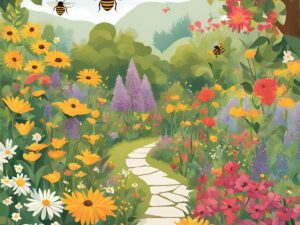
Enhanced Pollination
One of the most direct benefits of a bee-friendly garden is enhanced pollination, which leads to better yields for fruits, vegetables, and other flowering plants. Bees are highly efficient pollinators, what is a bees favorite flower and their presence in your garden makes plants more likely to be pollinated, resulting in more extensive and abundant crops. Whether you’re growing tomatoes, apples, or cucumbers, a healthy population of bees can dramatically increase the productivity and quality of your garden’s produce.
Biodiversity Boost
A bee-friendly garden doesn’t just attract bees; it also serves as a habitat for other beneficial insects and wildlife. Butterflies, ladybugs, do dahlias attract pollinators and birds are often drawn to the same flowering plants that bees favour, creating a thriving ecosystem. This increase in biodiversity contributes to the environment’s overall health, promoting natural pest control and a balanced ecosystem where different species support each other.
Aesthetic Appeal
Finally, a bee-friendly garden has a natural aesthetic appeal, creating a vibrant and thriving garden space. The variety of plants that attract bees, such as lavender, sunflowers, and wildflowers, add bursts of color and life to your garden. The sight and sound of bees busily foraging among the blooms add a dynamic, lively element It improves your outdoor space’s tranquility and beauty. A flourishing, colorful garden supports bees and provides a delightful environment for humans to enjoy. how to ripen tomatoes indoors
In summary, a bee-friendly garden offers enhanced pollination for better food production boosts biodiversity by attracting a range of beneficial species, what plants don’t attract bees and increases the aesthetic value of your garden, making it a more enjoyable and productive space.
Conclusion
Creating a bee-friendly garden is a simple yet impactful way to support these essential pollinators. By planting the Foolproof Five—lavender, sunflowers, wildflowers, borage, and coneflowers (echinacea)—you provide bees with vital nectar and pollen sources while enhancing your garden’s beauty and biodiversity. Each plant offers unique benefits, from lavender’s long blooming season to borage’s continuous nectar production, making them excellent choices for attracting and nourishing bees.
Now that you know how these plants can support bee populations, it’s time to take action. Plant these bee-friendly species in your garden and help conserve bees. By creating a habitat that promotes their health and survival, you’ll contribute to a more balanced ecosystem and enjoy the many rewards of a vibrant, flourishing garden. Together, we can safeguard and conserve our pollinators for coming generations.
FAQs:
Why are bees important for my garden?
For many plants to reproduce, pollination is necessary, and bees are an important part of this process. You can increase the production of fruits, vegetables, and flowers in your garden by luring bees. Because they promote variety and improve the ecology, bees also improve the general health of your garden.
Can I grow bee-friendly plants in a small garden?
Yes, bee-friendly plants can thrive in small gardens if you choose the right plants and plant them thoughtfully. You can still plant species like lavender, sunflowers, and borage, even in smaller spaces, to provide bees with essential food sources.
How do I know if my garden is attracting bees?
If you notice bees buzzing around your flowers and plants, collecting nectar and pollen, your garden is likely attracting them! The presence of bees is a good indicator that your garden is providing the necessary resources they need for food and habitat.
Why should I avoid using pesticides in my garden?
Bees and other useful insects can be harmed by pesticides by poisoning them or disrupting their foraging and reproductive processes. Choosing organic or natural pest control methods creates a safer and more supportive environment for bees and other wildlife.
Can I grow bee-friendly plants in containers?
Absolutely! Many bee-friendly plants, such as lavender, sunflowers, and borage, can be grown in containers. Make sure your plants get enough water, sunlight, and nutrition, and choose larger containers that provide ample space for the roots to spread.

